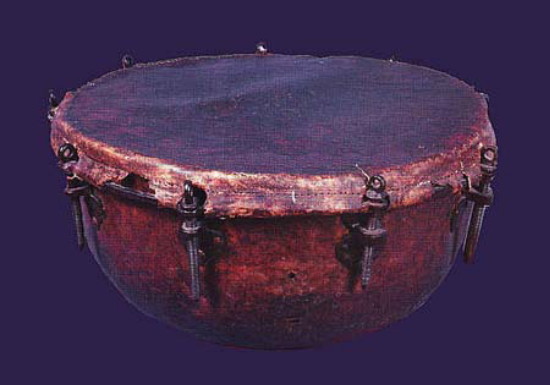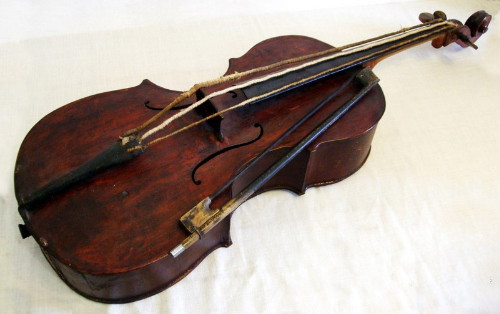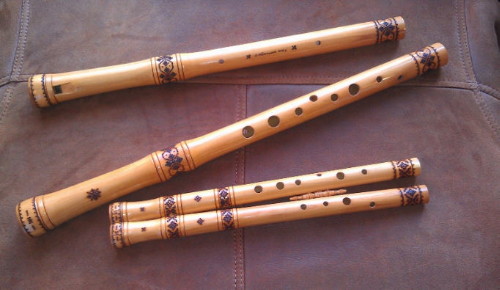Folk musical instruments
Folk musical instruments. Musical instruments, usually homemade, that were played by folk musicians. They can be divided into three basic groups according to their emission of sound: (1) string instruments, which are subdivided into (a) plucked instruments—psaltery (husli), bandura or kobza, torban, and drymba (Jews' harp); (b) bow instruments—hudok (three-string ancestor of the violin), violin (skrypka), and bass viol (basolia); (c) key and bow instruments—lira; and (d) string percussion instruments—tsymbaly (dulcimer); (2) wind instruments, which are subdivided into (a) free-reed instruments—sopilka (reed), kuvytsi or svyril; (b) reed-pipe instruments—duda (bagpipe, also known as koza, baran, mikh, or volynka); and (c) woodwind instruments—trembita; and (3) percussion instruments, which are subdivided into (a) membranophones—drum (bubon or taraban), tambourine (resheto), and kettledrum (tulumba or litavry); and (b) idiophones—cymbals, bells, and rattles. The most popular instruments in Ukraine were the bandura, sopilka, violin, and dulcimer.
Folk musical instruments were used primarily at dances and for marching (eg, the wedding march), as accompaniment to popular plays (koza, vertep), or for simple listening enjoyment. Dance music (metelytsia, hopak, tropak, kozachok, kolomyika, hutsulka, chabashka, verkhovynka, shumka, etc) was often played by one instrument (usually the violin) or by a small ensemble (violin and drum). Vertep performances were accompanied by single instruments or ensembles consisting of some combination of the violin, bandura, tsymbaly, drum, and sopilka. Strings formed the basis of an ensemble. The classic folk ensemble known as troisti muzyky originated probably in the 17th century and consisted of a violin, drum, and tsymbaly or bass viol. About the same time manorial orchestras appeared. They eventually played for the peasants and survived to the beginning of the 20th century in the form of an ensemble of two violins, bass, and flute. In Polisia and Podilia (and before that in other regions) brass orchestras were popular. Imitating military and earlier Cossack bands, they consisted of two to three trumpets (cornets), clarinets, two alto horns, a tenor horn, a baritone, drum, and brass cymbals. Since the 1950s ensembles and orchestras of folk instruments have been gradually disappearing from daily life. Instead, amateur and professional folk-instrument orchestras under the direction of qualified conductors have been organized. Instrumental folk music has been used as a source of material by composers of symphonies, operas, and ballets.
BIBLIOGRAPHY
Petukhov, M. Narodnye muzykal’nye instrumenty (Saint Petersburg 1884)
Demuts’kyi, P. Lira ta ïï motyvy (Kyiv 1903)
Khotkevych, H. Muzychni instrumenty ukraïns’koho narodu (Kharkiv 1930)
Lysenko, M. Narodni muzychni instrumenty na Ukraïni (Kyiv 1955)
Humeniuk, A. Ukraïns’ki narodni muzychni instrumenty, instrumental’ni ansambli ta orkestry (Kyiv 1959)
Komarenko, V. Ukraïns’kyi orkestr narodnykh instrumentiv (Kyiv 1960)
Humeniuk, A. Ukraïns’ki narodni muzychni instrumenty (Kyiv 1967)
Nestor Nyzhankivsky
[This article originally appeared in the Encyclopedia of Ukraine, vol. 1 (1984).]
.jpg)



